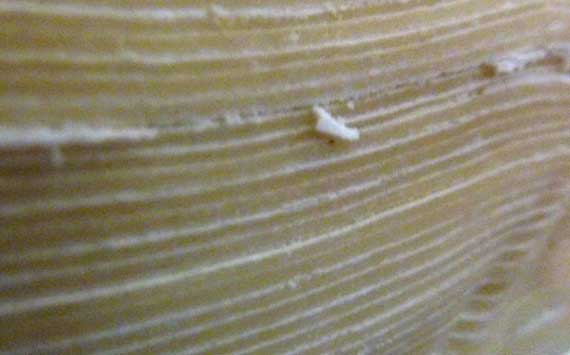Dough, the starchy kind
Friday, 21 May 2010

Stack of wonton wrappers: raw dough on the hoof, as it were.
Yesterday’s gyōza adventure lead me to think about doughs today. That’s one product we often buy and don’t even think of as a processed food. Examples of raw doughs on the supermarket shelf include pasta, unbaked frozen breads and rolls, and, I suppose, by extension, muffin and cake mixes.
Doughs are basically ground starch powder plus a liquid. Add flavorings, maybe eggs or yeast, etc., and you’re there. Around the world. We commonly think of wheat and maize as dough bases, and doughs can be made from powdered starchy roots, too (think Italian potato-wheat gnocci). One of the easiest ways to cook the dough is to drop it into boiling liquid—voila, dumplings.
A surprising fact about dough, if you believe WikiPee: dough masses usually act like non-Newtonian fluids. As near as I can tell, this refers to the gooey viscosity of the dough. Think of working bread or pizza dough: you can poke it and the surface bends in with your fingertip: the fluid acts like a solid. There are plenty of technical terms in the non-Newtonian entry, if you want to digest ’em!